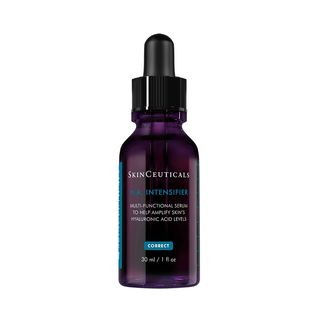Products You May Like

Caroline Tompkins / Refinery29 for Getty ImagesGetty Images
We can all shamelessly admit that we’ve succumbed to a viral TikTok beauty hack or product during our daily doom-scroll through the app. Perhaps it was adding liquid chlorophyll to your water when TikTok said the ingredient would help manage your acne. We’ve since learned that there’s not much scientific evidence to support this claim. Or maybe you plunged your face into a bowl of ice to reduce puffiness. These trendy treatments are plentiful, but thankfully there are also a plethora of science buffs on the app who debunk many of these myths and often offer alternative skincare treatment solutions. There is one trend that most skin experts can agree is worth the hype: slugging.
The hashtag alone yields over 189 million views because everyone is after one thing: baby smooth skin. Slugging is a simple practice that requires “applying an occlusive like petrolatum to the face before bedtime,” explains board-certified dermatologist Dr. Hadley King. Skincare trends can be tricky to navigate, but the benefits of slugging make it worth a try. Read below for tips on how to properly slug your skin from experts you can trust.
What is slugging?
You likely haven’t used petroleum jelly on your face since your childhood, but Dr. Alexis Parcells, MD, a board-certified plastic surgeon and founder of SUNNIE, explains that slugging is a simple technique “of slathering on a heavy-duty occlusive like petroleum jelly as the last step of a nighttime routine.” It gets messy, but slugging locks in moisture, as well as the other products you’ve used in your nighttime routine. “The slimy film resembles a slug. Hence the name “slugging,” she adds.
Carla Nelson and Wendy Jules of Brooklyn’s Fleur De Lis Beauty say the treatment is not only a great way to moisturize your skin overnight but “it offers great hydration and water retention leaving skin fresh in the morning. The goal is to maintain young bouncy skin and slugging definitely aids in that.”
How often should you do slugging?
Rule number one of skincare is to always be aware of your skin’s health and needs. “As far as frequency goes, it’s best to listen to your skin,” Nelson adds. If you have skin that tends to be dry, you may benefit from slugging daily. Those that have oily skin, however, should consider slugging less or not at all, Dr. Parcells says, as slugging might make any active breakouts or oil-prone skin even worse.
What type of products should you avoid when slugging?
Dr. Parcells advises against using active ingredients, such as alpha-hydroxy acids (AHAs), beta hydroxy acids (BHAs), or retinoids when slugging at night. “When trapped, these [actives] can increase their strength beyond what was concentrated by a chemist, leading to unpredictable results on your skin,” she explains. Slugging is best paired with hydrating ingredients that contain humectants like honey or aloe vera. “Slugging itself isn’t hydrating—it doesn’t infuse the skin with moisture. Rather, it just keeps the moisturizing products you’ve applied from seeping out,” Dr. Parcells says.
How do you properly slug your skin?
First, you want to make sure you’re starting with a clean face before applying products to the skin. “Slugging itself is not comedogenic (acne-causing), but if you have clogged pores or retained makeup, you could create an infection or outbreak by trapping these particles under the occlusive. Make sure your skin is SUPER clean before sealing it. Exfoliate.,” Dr. Parcells says.
Next, you want to make sure the products you’re applying are formulated to provide moisture. Dr. Parcells adds that you should look for “glycerin, hyaluronic, or aloe-based products” to apply to your damp skin. The steps are simple:
- Cleanse
- Exfoliate
- Moisturize with humectant-based products
- Apply the occlusive
These steps should be done about 30 minutes before bed to allow the products to seep into the skin. Before coating your skin with an occlusive, it’s best to also protect your pillowcase from the treatment. “Place a towel over your pillowcase as things can get messy overnight. Consider keeping your hair back in a sleep hat or headband. You may also use cling or saran wrap to contain the petroleum after application,” Dr. Parcells suggests.
What are the best products to use for slugging?
Once you’ve nailed the how-to, try the moisture-boosting treatment with these products. Then prepare for baby-soft skin by morning.
This content is created and maintained by a third party, and imported onto this page to help users provide their email addresses. You may be able to find more information about this and similar content at piano.io








